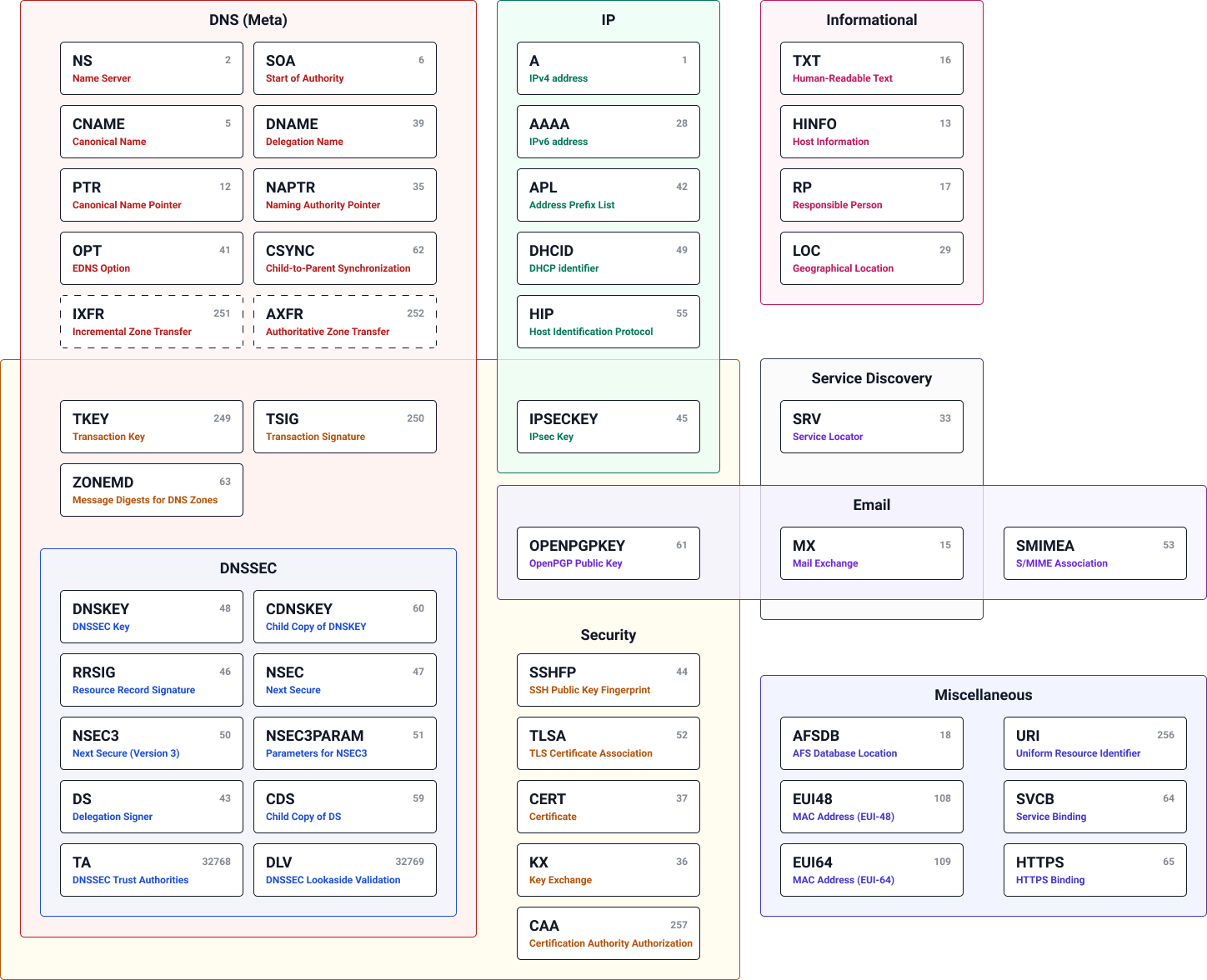Every DNS record has a type. This type defines what the content of the record means. For example, a DNS record of type MX contains the location of a mail exchange server. So when you want to know the mail server of some email address, you can perform a DNS lookup that queries the MX records.

All the record types are strictly defined in so-called RFCs (request for comments). Since the beginning of the domain name system, a lot of new record types have been added. Some record types have also been declared obsolete, because they have been replaced by a newer record type.
There are many different types of DNS record in existence. Most of them are used only occasionally. Only a couple record types are used very frequently.

Some of the most commonly used DNS record types are:
- A — IPv4 address
- AAAA — IPv6 address
- CNAME — Canonical name
- MX — Mail exchange
- NS — Name server
- TXT — Human-readable text
- SOA — Start of authority
These are all the DNS record types that are currently in use:
- A — IPv4 address
- AAAA — IPv6 address
- AFSDB — AFS database location
- APL — Address prefix list
- AXFR — Authoritative zone transfer
- CAA — Certification authority authorization
- CDNSKEY — Child copy of a DNSKEY
- CDS — Child copy of DS
- CERT — Cryptographic certificate
- CNAME — Canonical name
- CSYNC — Child-to-parent synchronization
- DHCID — DHCP identifier
- DLV — DNSSEC lookaside validation
- DNAME — Delegation name
- DNSKEY — Cryptographic key for DNSSEC
- DS — Delegation signer
- EUI48 — MAC address (EUI-48)
- EUI64 — Mac address (EUI-64)
- HINFO — Host information
- HIP — Host identification protocol
- HTTPS — HTTPS binding
- IPSECKEY — Cryptographic key for IPsec
- IXFR — Incremental zone transfer
- KEY — Cryptographic key for DNSSEC (obsoleted by DNSKEY)
- KX — Key exchange
- LOC — Geographical location
- MX — Mail exchange
- NAPTR — Naming authority pointer
- NS — Name server
- NSEC3 — Next secure (version 3)
- NSEC3PARAM — Parameter for NSEC3
- NSEC — Next secure (obsoleted by NSEC3)
- NXT — DNSSEC key (obsoleted by NSEC)
- OPENPGPKEY — Public key for OpenPGP
- OPT — EDNS option
- PTR — Canonical name pointer
- RP — Responsible person
- RRSIG — Resource record signature for DNSSEC
- SIG — Resource record signature for DNSSEC (obsoleted by RRSIG)
- SMIMEA — S/MIME association
- SOA — Start of authority
- SSHFP — Public key fingerprint for SSH
- SVCB — Service binding
- SRV — Service locator
- TA — Trust authority for DNSSEC
- TKEY — Transaction key
- TLSA — Certificate association for TLS
- TSIG — Transaction signature
- TXT — Human-readable text
- URI — Uniform resource identifier
- ZONEMD — Message digest for DNS zones
